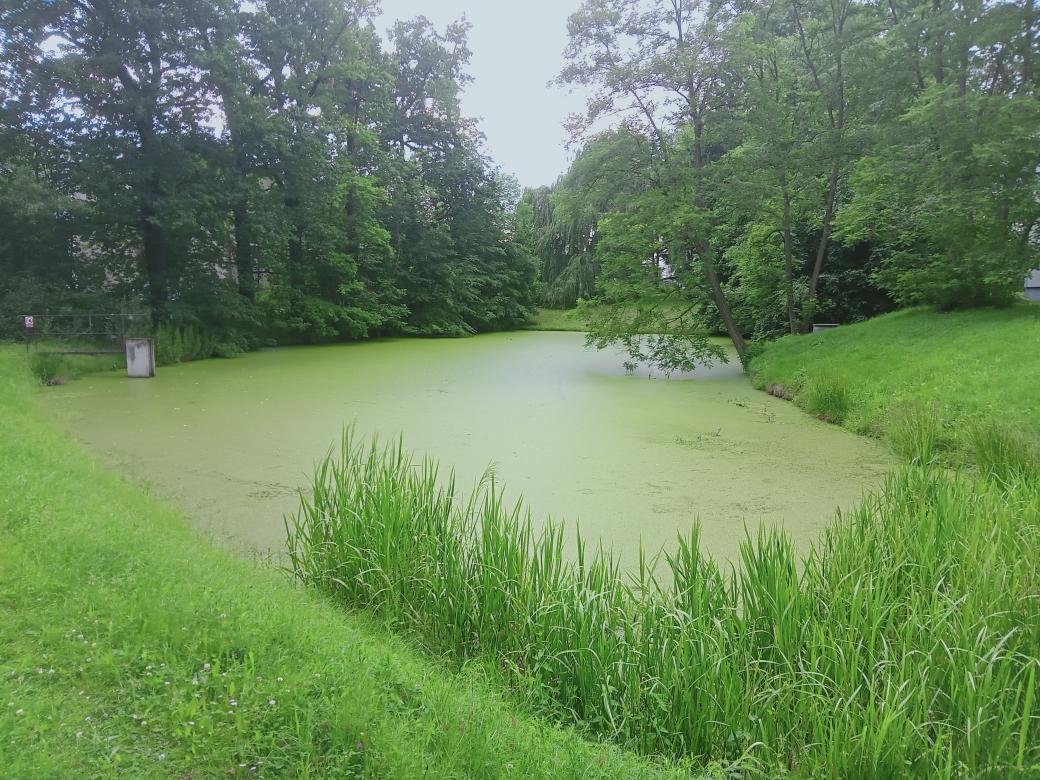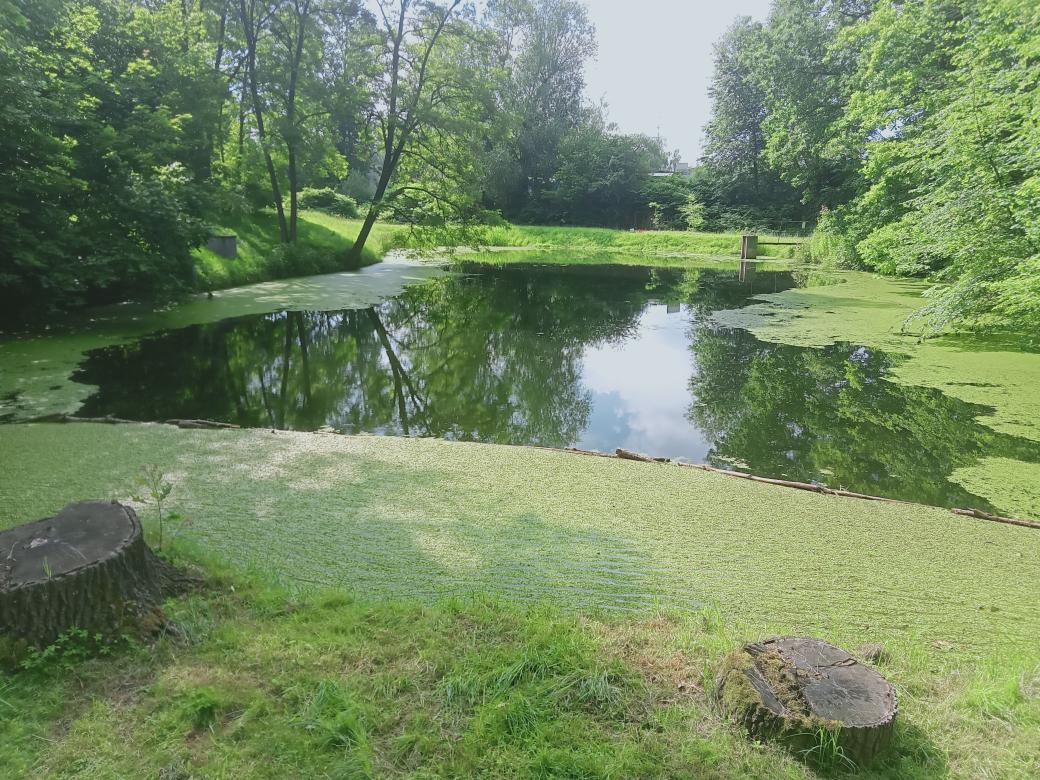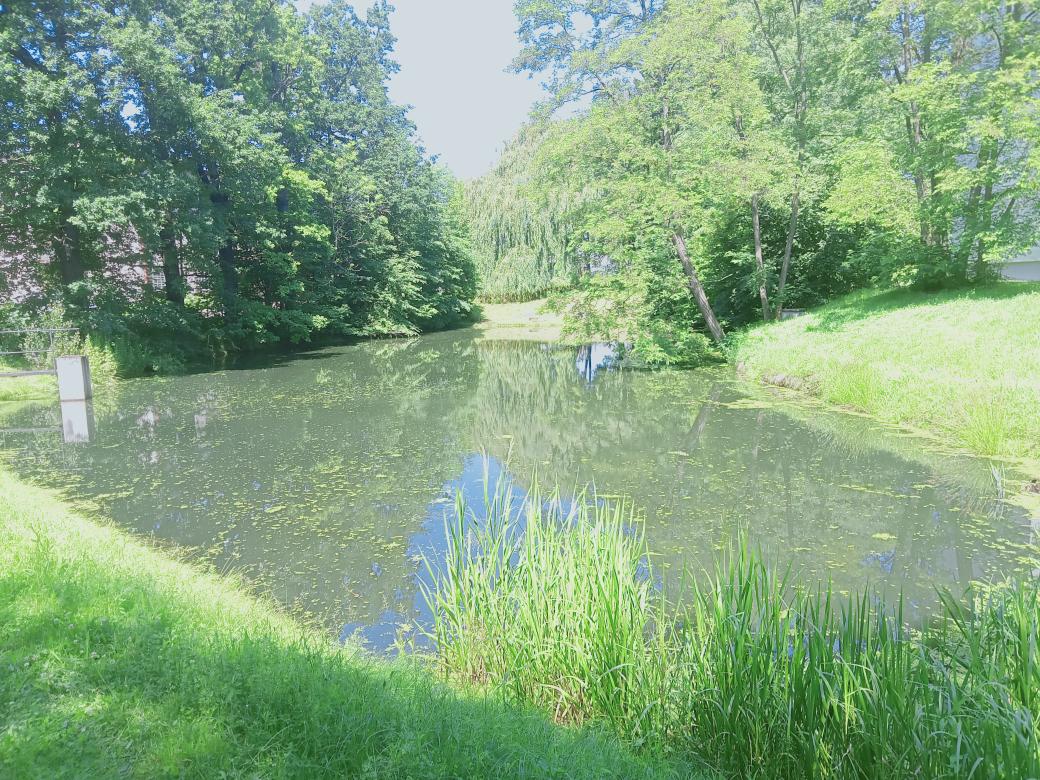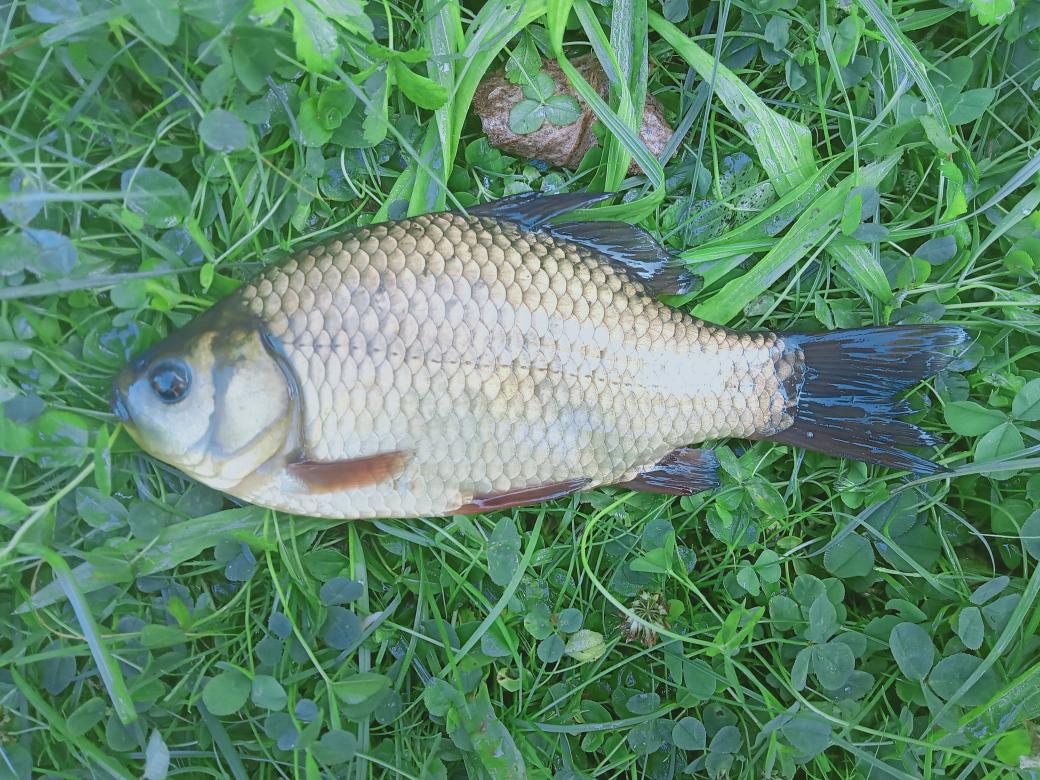We have been entrusted with the care of a pond in the centre of České Budějovice for breeding crucian carp. The pond is supplied by a stream with the possibility of flow regulation. The water in the stream is extremely fertile and as this water flowed through the pond, the result was overgrown water with duckweed (Lemna). That can be a big problem because the water underneath is cooler with no light, little oxygen and little natural food for the fish, so the fish grow slowly. The crucian carp usually don't even spawn under the duckweeds. We have tried several times to flush the Lemna out through the outfall device at increased flow, this has worked, but within 3 weeks the Lemna had overgrown the pond back to its original state. The next spring we stopped the inflow, no water was coming in or going out. During the spring, the Lemna reestablished again (Figure 1), so we prepared several logs, tied them together, and pulled the Lemna down to one bank (Figure 2). We used the carp sac to remove the Lemna (Figure 3). 1% of Lemna left in the water and it was enough to re-grow the pond entirely within 3 weeks. So we had to repeat the whole procedure.
Next, we stocked grass carps of 10-12 cm in size to eliminate the Lemna growth, and then removed the Lemna remnants with a carp sac. Since then, the Lemna have not grown any more. Soon after the removal of the Lemna, algae multiplication occurred, followed by a mass multiplication of coarse zooplankton and water clarity increased. Fish growth was large. There was a multiplication of the introduced crucian carps and sunbleaks. The growth of crucian carps was around 12 cm. The crucian carps stocked in April 2024 measured 8 cm, and by September 2024 they measured 20 cm (Figure 4). For grass carp, growth increased from an initial 10 cm (June 2024) to 30 cm (September 2024).
The process of pond overgrowth has been reversed and biodiversity has also increased. After the removal of the Lemna, water clarity was more than one meter by eye and clumps of coarse zooplankton were present. In addition, tadpoles and many larvae and adults of aquatic insects were present in the water. This intervention was thus beneficial not only for the crucian carp and the sunbleak, but also for other biota of the stillwaters.




Author of the article and photos: Vojtěch Kresl